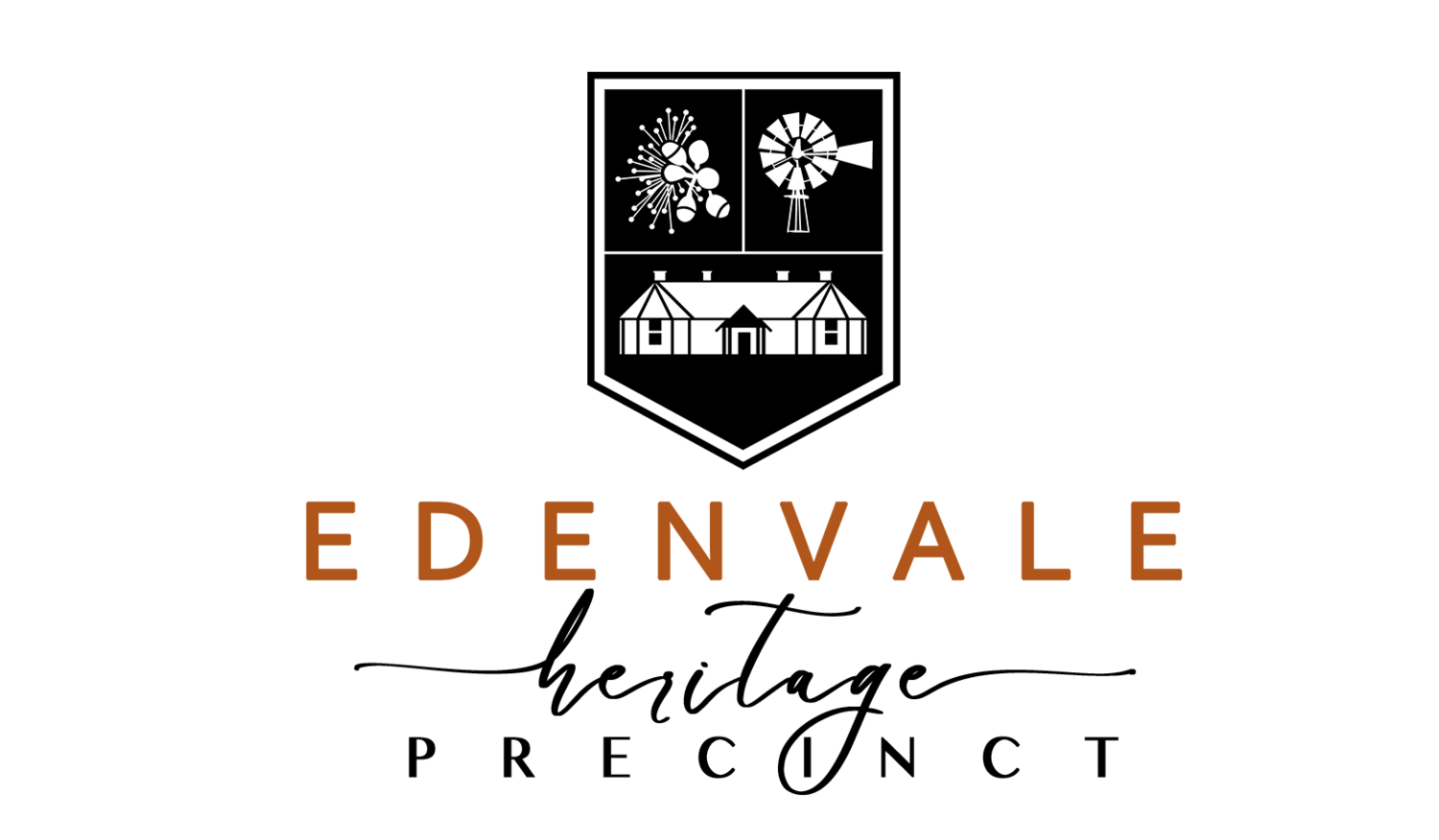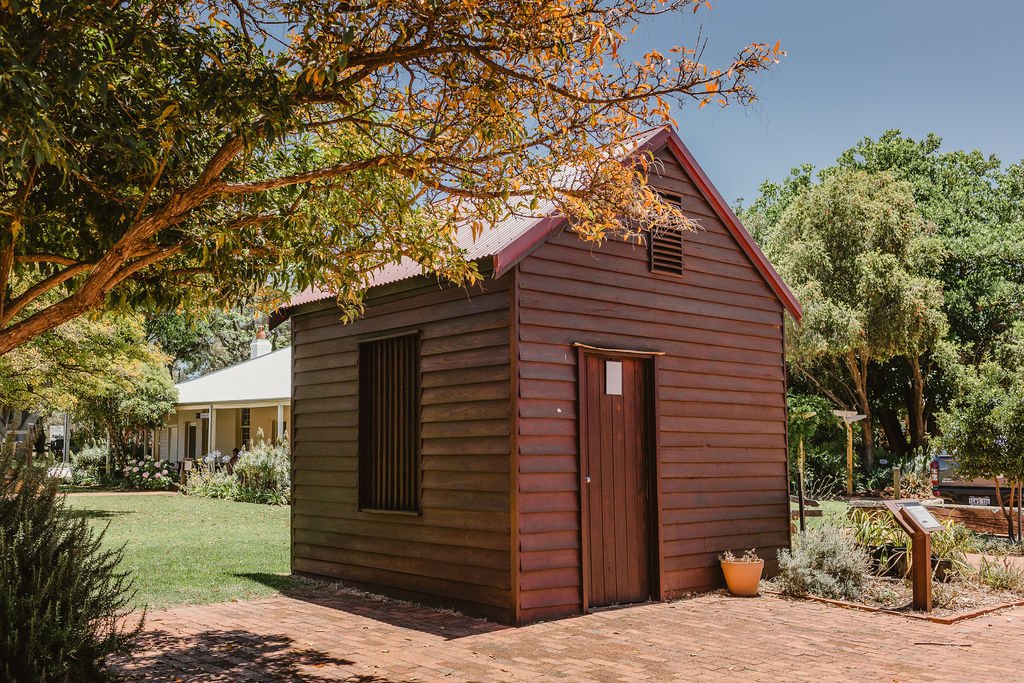
The Buildings
Home to historic and culturally significant buildings, the Precinct is remnant of a nineteenth-century rural village retaining its character of heritage architecture, homestead gardens, timber fences and barns.
Explore the history of our buildings below!
St John’s Church
The charming 1860s church boasts stunning architectural elements such as leadlight windows and archways with rich wooden features and is considered the fifth oldest church in Western Australia.
The land was first allocated as a church site in 1840 with the first official Sunday service held in February 1842. In 1860 the original church building, constructed of ‘wattle and daub’ was described as ‘going to ruins’ and in 1861 was replaced by the present St John’s Church built by Anthony Cornish for 263 pounds, with the porch being added in 1879.
Lucky to be standing after nearly being destroyed by fire in 1901 and surviving several floods including the most notable and significant being the 1945 flood as well as the Meckering Earthquake in 1968.
In 2019, the church celebrated more than 150 years of Anglican workshops before becoming deconsecrated.
In 2020 following conservation works the church received a Western Australia Heritage Award for world-class heritage practices.
Liveringa Homestead
Liveringa is the oldest homestead within the Precinct and was the first homestead of Edward McLarty, the second son of John and Mary Ann McLarty.
Its name was taken from the McLarty family holdings in the West Kimberley region and the word is of Aboriginal origin relating to a spring located northwest of Liveringa station.
The construction date of the farmhouse is somewhat uncertain but records suggest it was sometime in the early 1860s and expanded in 1873-74 when Edward married Mary-Jane.
The farmhouse is representative of farming accommodation of that era and shows characteristics of a late example of the Old Colonial Georgian style of architecture in Western Australia.
Edenvale Homestead
The Edenvale Homestead was built in 1888 as a more substantial residence for Edward McLarty and his family. The Victorian style homestead has been standing for over 130 years and is an award winning heritage listed home of incredible significance, being the home also of Sir Duncan Ross McLarty, former Western Australia Premier from 1947 to 1953.
The Homestead features a dining room, large parlour, main bedrooms, a guest bedroom and sitting room off the back verandah. The sitting room was occupied by a significant member of staff, Kitty Rose, who was an Aboriginal girl taken on by the McLarty Family as a domestic helper when Sir Ross was a small boy. Kitty lived at the Homestead for the rest of her life and is said to have entertained her friends in this room.
In 2009, arsonists caused severe damage to the south-wing of the homestead, which has since been carefully restored and was recognised in 2013 for outstanding restoration by the Western Australia State Heritage Award.
Butcher’s Shed
Located in the north corner of the rear courtyard of the Edenvale Homestead, the butcher’s shed was built in c1890s.
The butcher’s shed is a small single-room weatherboard building with a corrugated iron gabled roof.
The McLarty Family operated Pinjarra’s first butcher shop from this small building.
Old School Master’s House
In 1896, the teacher’s quarters were built facing the church and designed by chief government architect George Temple Poole.
The brick and corrugated iron building has a weatherboard extension and was used in connection with the school during its period.
The building has been used for community use since the 1990s.
Old School House
Old School House played a significant role in the development of Pinjarra with it first being a schoolhouse, then subsequently used as a Court House, Road Traffic Office and Parish Hall.
The building is thought to be part of the Victorian revival style designed by chief government architect George Temple Poole and constructed in 1899. The school comprised of three classrooms, cloakrooms for boys and girls and small manual training room.
The old school house was built in response to the previous school being damaged in the 1862 floods and the absence of a school for many years.
In 1921, a new school was erected in Pinjarra and the old school remained closed and unused until later being leased by Pinjarra Roads Board.
Heritage Rose Garden
The Heritage Rose Garden is a unique and public garden within the Edenvale Heritage Precinct. It is solely dedicated to roses, being the only one in Western Australia. It grows many different kinds of roses including ancient species (wild) roses, spring-flowering European, Chinese, 20th Century ramblers and classic hybrid teas.
The Heritage Rose Garden was first started in the early 1980s by Noel Frost with roses being donated from all over Australia to preserve different species in rose history and celebrate their genetic diversity.
Though the blooming time for roses is usually October, blossoms can be seen year round within the Heritage Rose Garden!
Roger May Machinery Museum
Built in c1991 and officially opened in 2001, the museum is built from rammed earth, timber and iron sheeting. The Museum is a replica of the original barn that started its life around 1888 in the Precinct and was originally used to house working horses, milking cows and to store farm equipment and machinery.
The Cart Shed
The Cart Shed was relocated within the Precinct in 1993-1994 and rebuilt to house the collection of agricultural machinery associated with the Roger May Machinery Museum and to be used as a workshop for its volunteers.
































